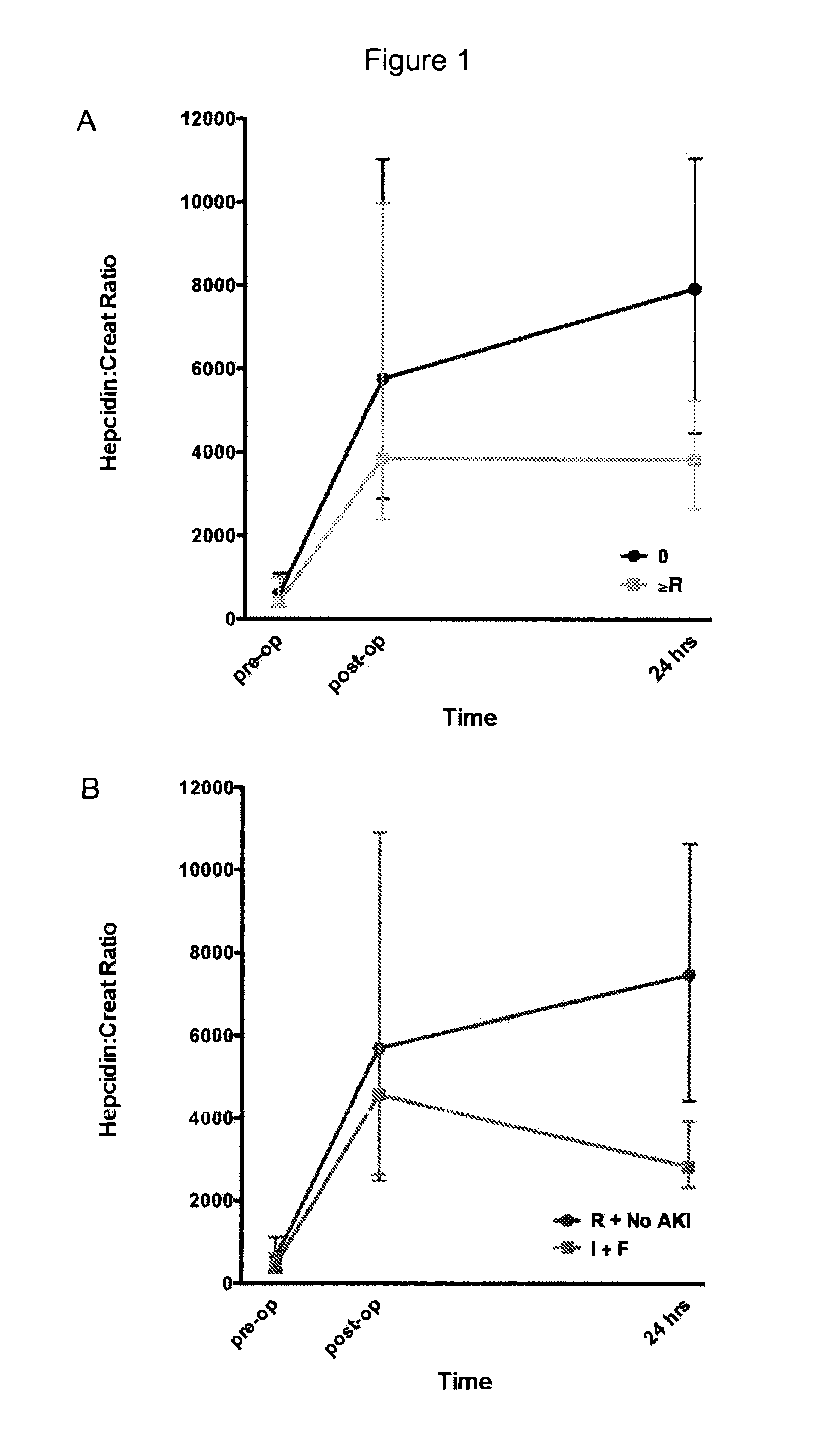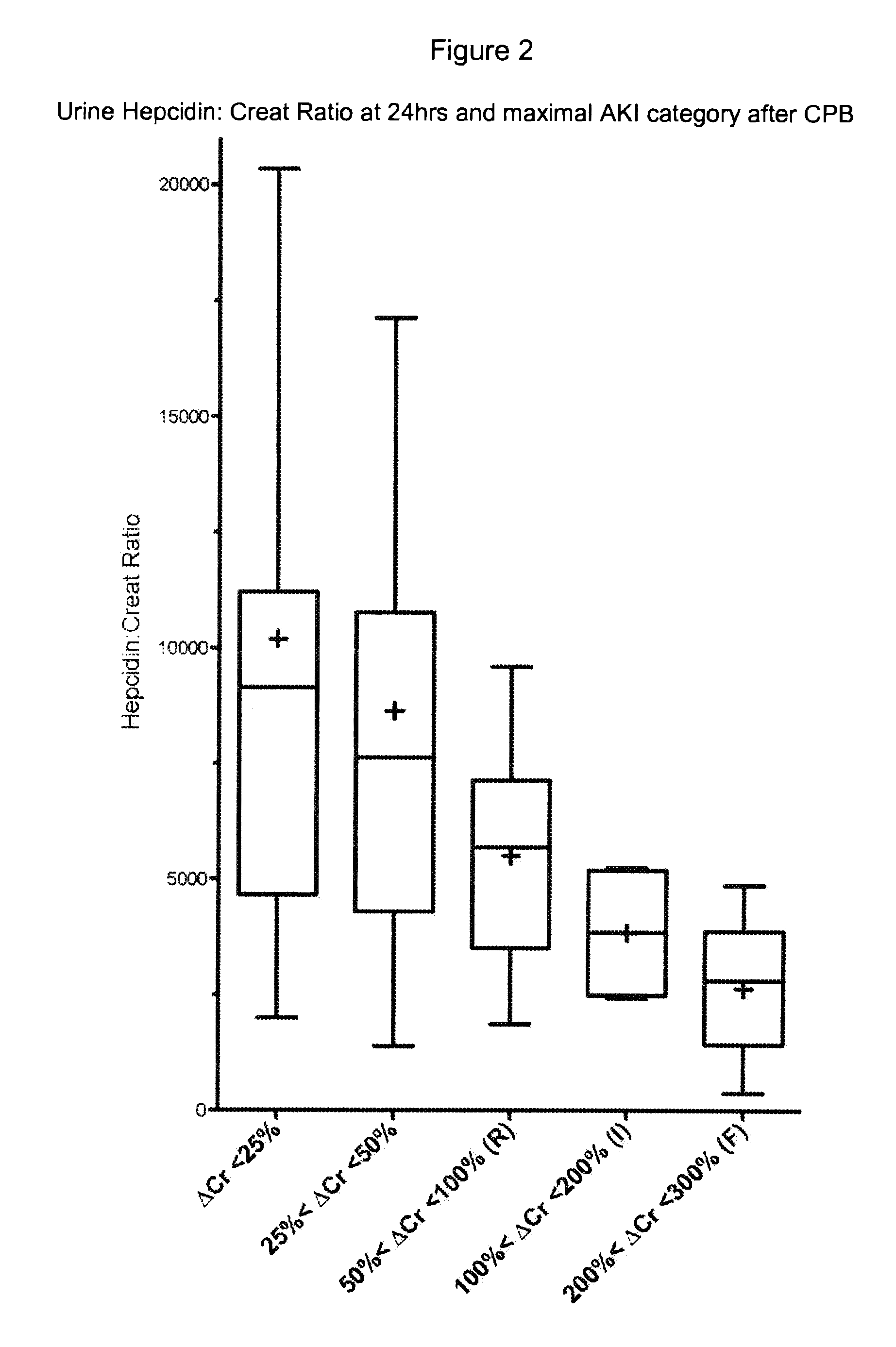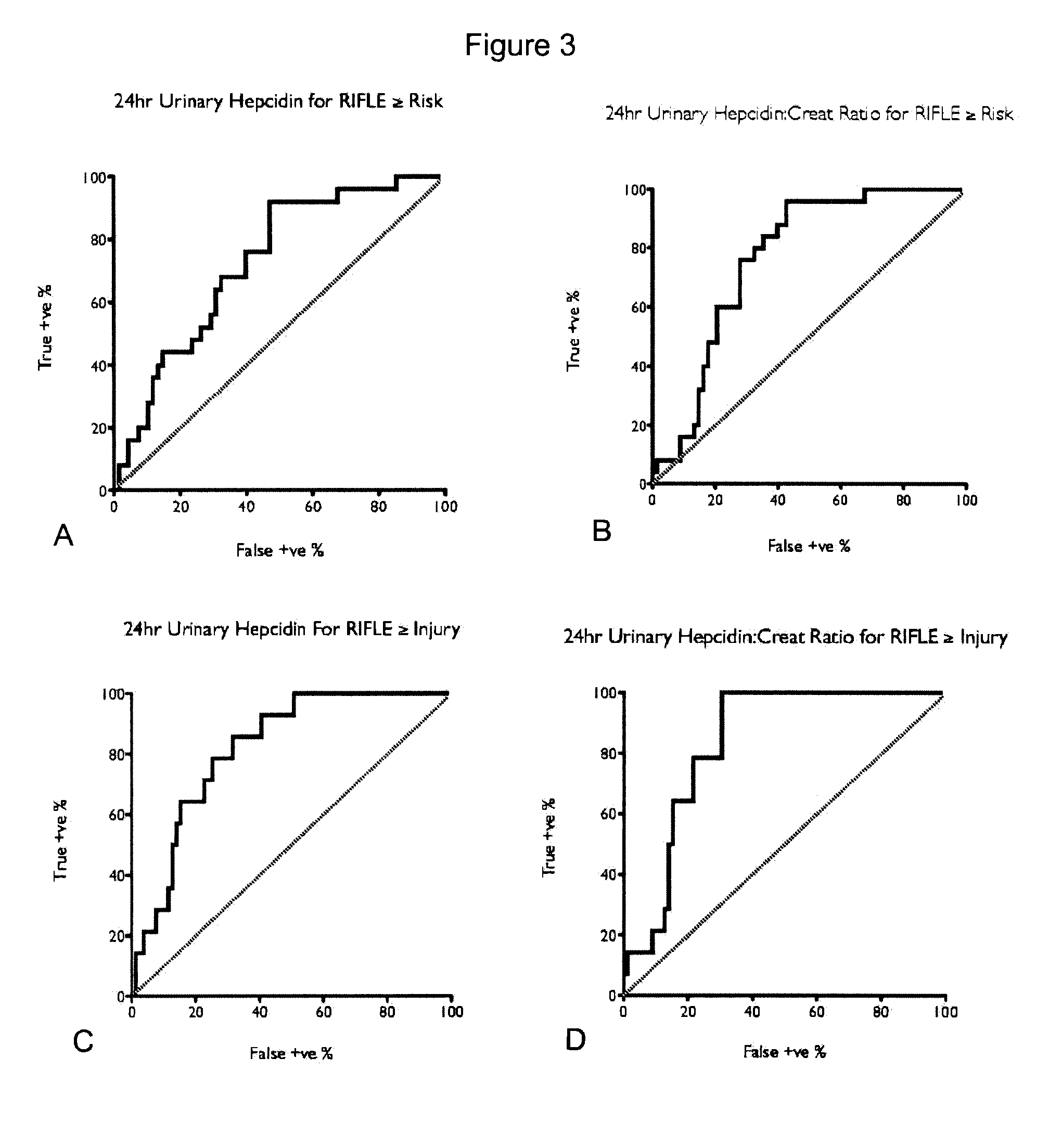Markers for acute kidney injury
a kidney injury and marker technology, applied in the field of markers for acute kidney injury, can solve the problems of aki postoperatively in certain patients, diabetics, elderly men and women, etc., and achieve the effect of preventing aki and high risk of moderately affecting the patien
- Summary
- Abstract
- Description
- Claims
- Application Information
AI Technical Summary
Benefits of technology
Problems solved by technology
Method used
Image
Examples
Embodiment Construction
[0046]Previous studies have shown that, when cardiac surgery is performed using CPB, there is injury to red cells and release of free hemoglobin (Takami Y., et al., 1996, Artificial Organs 20:1155-161). Aside from complete red blood cell fragmentation there also can be red cell damage, resulting in altered rheological properties. Increased levels of free red blood cell constituents together with an exhaustion of their scavengers transferrin and haptoglobin result in a variety of serious clinical sequelae, such as increased systemic vascular resistance, altered coagulation profile, platelet dysfunction, renal tubular damage, and increased mortality (Vercaemst L., 2008, J. Extracorporeal Technology 40: 257-67). Such injury raises concerns that CPB associated AKI may be a form of renal sideropathy and that free or inappropriately liganded iron related toxicity may play a role.
[0047]NGAL is a siderophore-binding lipocalin involved in ischemic renal injury and repair processes. Sideropho...
PUM
| Property | Measurement | Unit |
|---|---|---|
| concentration | aaaaa | aaaaa |
| concentration | aaaaa | aaaaa |
| concentration | aaaaa | aaaaa |
Abstract
Description
Claims
Application Information
 Login to View More
Login to View More - R&D
- Intellectual Property
- Life Sciences
- Materials
- Tech Scout
- Unparalleled Data Quality
- Higher Quality Content
- 60% Fewer Hallucinations
Browse by: Latest US Patents, China's latest patents, Technical Efficacy Thesaurus, Application Domain, Technology Topic, Popular Technical Reports.
© 2025 PatSnap. All rights reserved.Legal|Privacy policy|Modern Slavery Act Transparency Statement|Sitemap|About US| Contact US: help@patsnap.com



